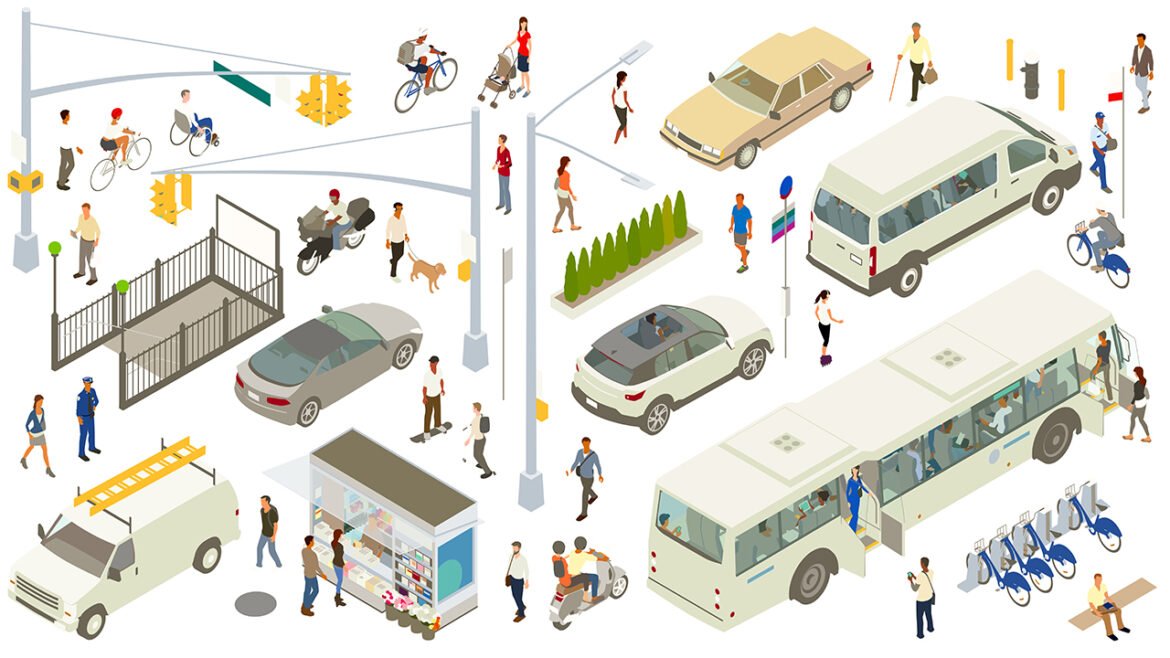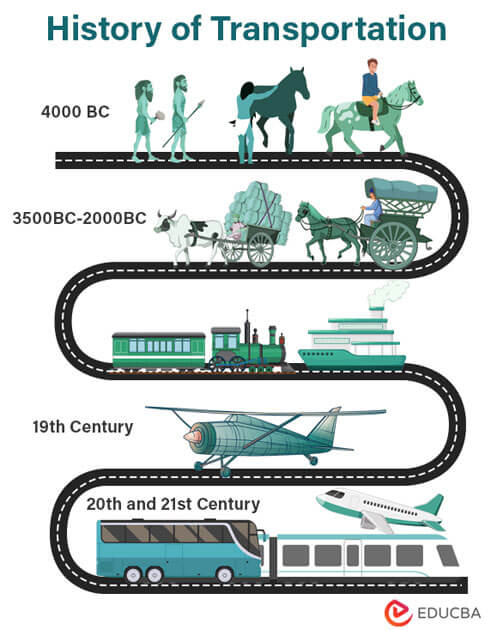
The Past: Historical Overview of Transportation Evolution
Early Modes of Transportation
Transportation has a rich history that dates back to ancient civilizations. Early modes of transportation included simple mechanisms such as walking, animal-drawn carts, and boats crafted from wood. The reliance on animals, particularly horses and donkeys, made transportation of goods and people more efficient. Communities flourished along rivers, utilizing them for commerce.
- Walking: The most primitive form allowing human interaction.
- Animal-Pulled Carts: Essential for trade and agriculture.
These methods laid the foundation for societal progress and interconnectedness.
The Industrial Revolution and Transportation
The Industrial Revolution dramatically transformed transportation with the introduction of steam power. The creation of railways not only expedited travel but also revolutionized commerce, linking distant regions. For instance, the Liverpool and Manchester Railway opened in 1830 marked the dawn of significant rail transport.
Benefits included:
- Speed: Trains could travel much faster than horse-drawn vehicles.
- Capacity: Trains could carry significantly larger quantities of goods.
Impact of Automobiles on Transportation
With the advent of the automobile in the late 19th century, personal mobility surged. The Model T by Ford made cars affordable for the masses, changing the landscape of transportation. Suddenly, individuals gained the freedom to travel long distances independently.
- Urban Expansion: Cities grew as people could commute further.
- Cultural Shifts: The automobile influenced leisure activities, such as road trips and cross-country travels.
These advancements set the stage for today’s smart transportation systems, reflecting an evolution steeped in innovation and adaptability.

The Present: Smart Transportation Technologies
Introduction to Smart Transportation
As we advance into a digital era, smart transportation technologies are emerging as a vital solution for urban mobility challenges. Imagine a city where traffic lights adapt in real-time to traffic flow or where public transportation is seamlessly integrated with ride-sharing services. Smart transportation focuses on leveraging technology to enhance the efficiency and safety of our transportation systems.
For example, during a recent trip to a bustling city, I noticed how the integration of apps for public transit improved my experience. I could track buses in real-time, making waiting times more manageable.
Role of IoT in Smart Transportation
The Internet of Things (IoT) is at the heart of smart transportation. Connected devices communicate with one another, gathering data to optimize travel. For instance:
- Traffic Sensors: These monitor traffic flow to reduce congestion.
- Connected Vehicles: Cars equipped with IoT devices can share information about road conditions or accidents.
This connectivity enhances decision-making for commuters and city planners alike.
Benefits of Smart Transportation Systems
The implementation of smart transportation systems offers numerous benefits, including:
- Increased Efficiency: Reduced travel times through real-time data utilization.
- Sustainability: Lower emissions with optimized routes and traffic management.
- Improved Safety: Enhanced monitoring and control of traffic incidents.
These innovations are reshaping our cities, making them more livable and efficient, as we transition towards a future defined by smart mobility solutions.

Challenges in Smart Transportation Implementation
Infrastructure Limitations
While smart transportation technologies have revolutionized our urban landscapes, significant challenges remain in their implementation. A primary hurdle is outdated infrastructure that struggles to support new technologies. Many cities were designed decades ago without the foresight of today’s needs.
For example, during a recent visit to a city attempting to implement smart traffic lights, I noticed that many intersections lacked the essential sensors for connectivity. This disparity means that investments in technology may yield insufficient results if the infrastructure cannot keep pace.
- Legacy Systems: Many cities still rely on outdated signal systems that hinder modernization.
- Funding Issues: Allocating resources for upgrades often competes with other pressing city priorities.
Security and Privacy Concerns
Another pressing challenge involves security and privacy. As vehicles and infrastructure become more interconnected, they also become more vulnerable to cyberattacks. The deployment of smart transportation systems raises valid concerns around data collection and user privacy.
- Data Breaches: The risk of sensitive user data being compromised is a significant concern.
- User Consent: Ensuring that individuals understand how their data will be used is essential.
Regulatory and Legal Hurdles
Regulatory frameworks often lag behind technological advancements in smart transportation. Policymakers must create guidelines that ensure the safe integration and operation of these systems.
- Lack of Standardization: Diverse regulations across regions can stifle innovation.
- Liability Issues: Clarifying responsibilities in accidents involving autonomous vehicles remains a gray area.
Overcoming these challenges is crucial for realizing the full potential of smart transportation, paving the way for future advancements and improved urban mobility.
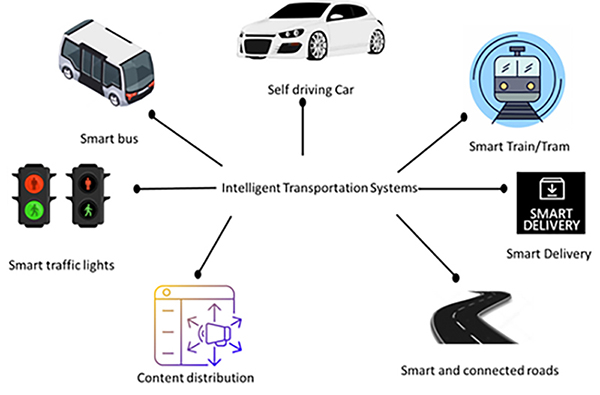
Future Trends in Smart Transportation
Autonomous Vehicles
As we transition beyond current challenges, one of the most exciting future trends in smart transportation is the rise of autonomous vehicles. Imagine a world where cars are fully self-driving, eliminating the challenges of human error. I once had the chance to experience a ride in a prototype autonomous car, and it was fascinating to see how sensors and cameras seamlessly navigate through traffic.
- Enhanced Safety: Studies suggest that autonomous vehicles could significantly reduce accident rates.
- Increased Accessibility: These vehicles promise improved mobility for individuals unable to drive, such as the elderly or disabled.
Integration of AI in Transportation
Integration of artificial intelligence (AI) further enhances these developments. AI can optimize routes in real-time, adjusting for traffic and weather conditions, which I found incredibly convenient during peak hours.
- Predictive Analytics: AI algorithms can predict traffic patterns, helping city planners optimize infrastructure.
- Enhanced User Experience: AI-driven applications can provide personalized travel suggestions based on user behavior.
Sustainable Transportation Solutions
Lastly, sustainability is at the forefront of future transportation trends. With growing awareness of climate change, cities are exploring greener modes of transport.
- Electric Vehicles (EVs): Adoption of EVs is crucial for reducing emissions.
- Public Transportation Innovations: Upgrades to electric buses and bike-sharing programs promote eco-friendly travel options.
These trends illustrate a promising future, setting the stage for a smarter, safer, and more sustainable transportation landscape.
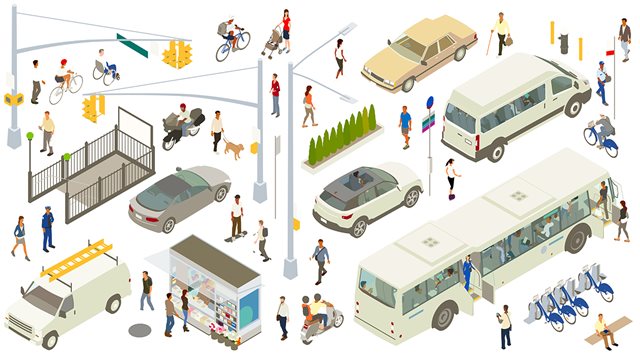
Impact of Smart Transportation on Urban Development
Traffic Management and Congestion Reduction
The shifts toward smart transportation significantly reshape urban development, particularly in traffic management and congestion reduction. With the implementation of real-time traffic monitoring systems, cities can proactively manage their roadways. During my recent visit to a smart city, I observed how adaptive traffic signals responded dynamically to varying traffic volumes, resulting in smoother journeys for everyone on the road.
- Data-Driven Strategies: Utilizing data analytics allows cities to detect congestion earlier.
- Efficient Commuting: Reduced traffic stoppages lead to shorter travel times and improved air quality.
Environmental Benefits
Smart transportation also offers notable environmental advantages. By optimizing routes and promoting electric vehicles, cities can considerably lower carbon emissions. For instance, initiatives like bike-sharing programs and electric public transit not only reduce reliance on personal vehicles but also foster healthier lifestyles.
- Reduced Emissions: Transitioning to electric fleets curtails air pollution.
- Improved Urban Greenspaces: Less need for expansive parking lots allows for the development of parks and green areas.
Social and Economic Impacts
Lastly, the social and economic impacts of these systems are profound. Smart transportation encourages investments in urban infrastructure, which can lead to job creation and enhanced quality of life.
- Increased Accessibility: Higher connectivity boosts local businesses.
- Community Engagement: Enhanced public transit fosters more vibrant social interactions.
As smart transportation continues to evolve, it promises to create resilient, adaptive urban environments that can meet the demands of the future.
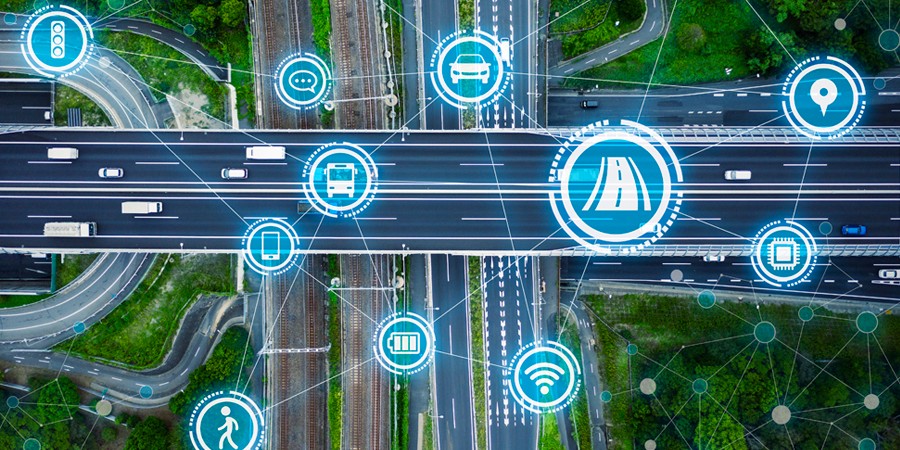
Case Studies: Success Stories in Smart Transportation
Smart City Initiatives
Numerous cities worldwide are spearheading successful smart transportation initiatives, showcasing the potential of innovative solutions. One standout example is Barcelona, where the incorporation of smart traffic lights and dedicated bike lanes has transformed the urban landscape. I recently explored Barcelona’s smart bike-sharing program and marveled at how seamlessly it integrates with public transportation, making eco-friendly travel a breeze.
- Real-Time Data: Traffic management systems utilize sensors to adjust stoplights dynamically, reducing congestion.
- User Engagement: Mobile apps allow citizens to plan multimodal journeys easily, fostering greater use of public transport.
Companies Leading Innovation in Smart Transportation
Several companies are at the forefront of driving innovation in smart transportation. For instance, Waymo, a subsidiary of Alphabet, has developed a cutting-edge autonomous vehicle program. Their vehicles, which are already successfully operating in select areas, have demonstrated how self-driving technology can enhance urban mobility.
- Safety Testing: Waymo’s rigorous testing protocols prioritize safety and efficiency.
- Partnerships: Collaborations with municipalities ensure that their technology meets local needs.
These case studies reveal that by harnessing technology and innovative thinking, cities and companies can create smarter, more sustainable transportation solutions that cater to the demands of the future.
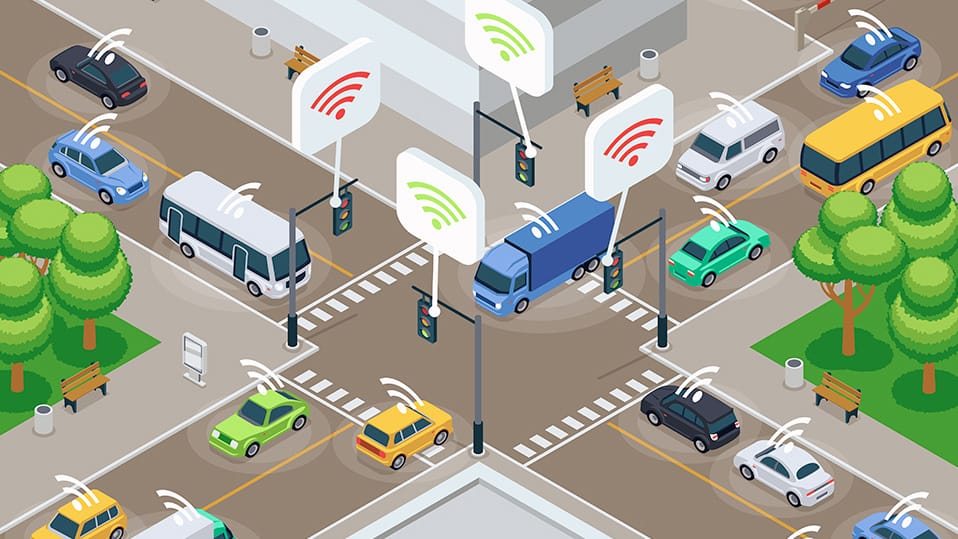
Ethical Considerations in Smart Transportation
Data Collection and Privacy Ethics
As smart transportation systems evolve, ethical considerations around data collection and privacy become critically important. With the vast amount of data collected from vehicles and users, questions about who owns this data and how it is used arise. For example, while riding in a shared autonomous vehicle during a recent trip, I realized how personal journey data could be utilized for profit, potentially without user consent.
- Data Usage Transparency: Companies must clearly communicate how data is collected and used.
- User Control: Empowering users with choices about data sharing is essential to build trust.
Accessibility and Inclusivity in Transportation Systems
Another ethical dimension pertains to accessibility and inclusivity in transportation systems. Smart transportation should cater to all segments of the population, ensuring no one is left behind.
- Universal Design: Technologies must be developed with accessibility at their core, incorporating features for individuals with disabilities.
- Community Engagement: Involving diverse community input during the planning phase helps create systems that truly meet the needs of all users.
Addressing these ethical considerations is crucial for a fair and effective smart transportation future, promoting equity and trust within the communities they serve.

Conclusion: Roadmap to the Future of Smart Transportation
Key Takeaways
As we’ve explored the multifaceted world of smart transportation, several key takeaways stand out. Firstly, the integration of technology, such as IoT and AI, is reshaping our urban environments and enhancing mobility. Witnessing these transformations firsthand in cities like Barcelona and San Francisco highlights their potential to revolutionize daily commutes.
- Traffic Management Improvements: Real-time data and adaptive systems are vastly improving congestion.
- Enhanced Safety Measures: Autonomous vehicles are paving the way towards safer roads.
The Road Ahead in Smart Transportation
Looking to the future, it’s clear that smart transportation is not just a trend, but a necessary evolution. The road ahead includes tackling ethical challenges, improving infrastructure, and ensuring inclusivity across all transportation systems.
- Continued Innovation: Companies will keep pushing boundaries in autonomous technology and smart city solutions.
- Collaboration is Key: Partnerships between governments, tech companies, and communities will drive successful implementations.
As we embrace these advancements, the goal is to create a seamless, efficient, and sustainable transportation landscape that benefits everyone. The journey has only just begun, and the future looks promising for smart transportation solutions.
